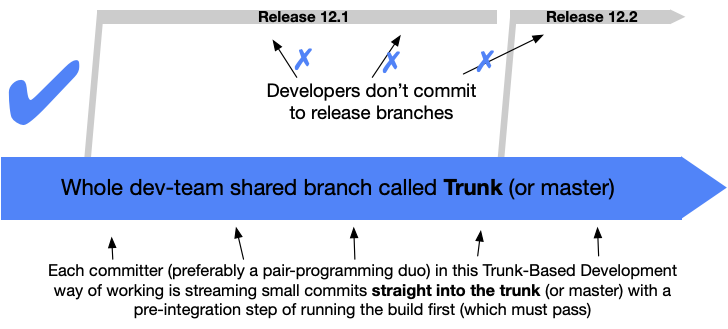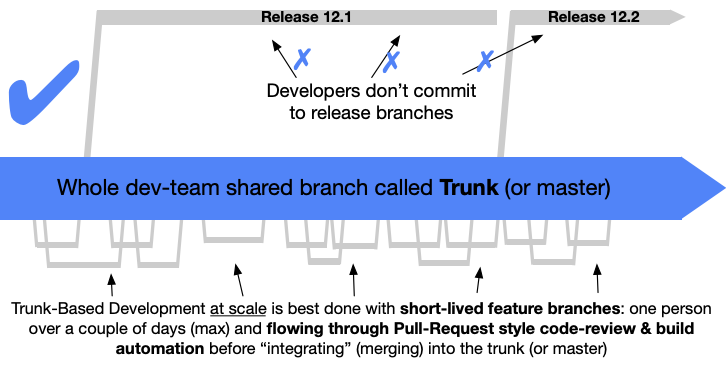Here there's main. You branch off. Do your work. Make a PR to main. Build passes and someone approves, merge to main. Production release is done by tagging main.
The branches are short lived because the units of work we select are small. You have like one pr for an endpoint. You don't wait until the entire feature with 20 endpoints is ready to merge.
Seems to work fine. I think this is different than trunk based development but honestly I'm not sure I understand trunk.


